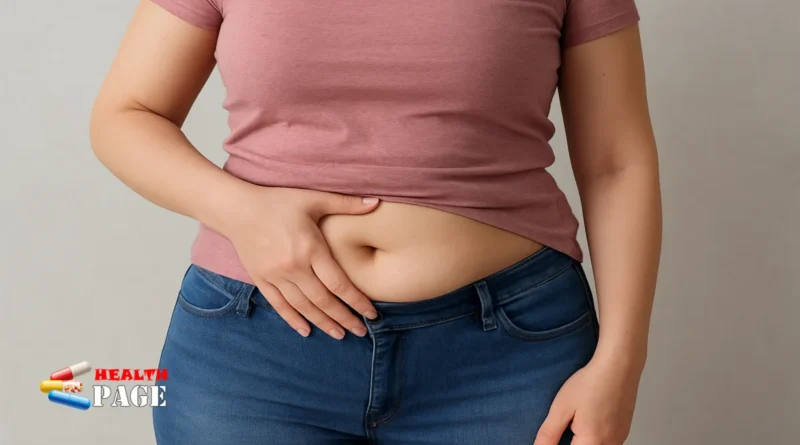7 Shocking Truths That Define FUPA and How to Beat It
When people first hear the word FUPA, they often feel curious, embarrassed, or even a little amused. But here’s the reality: many people secretly wonder, “What exactly does this mean?” and, more importantly, “What can I do about it?” In simple terms, when we define FUPA, we’re talking about the Fat Upper Pubic Area, a common body concern that affects both men and women.
The surprising part? You’re not alone. FUPA is far more common than people think, yet it’s rarely discussed openly because of stigma and body shame. By the end of this article, you’ll not only understand what is FUPA but also learn how to embrace your body, boost your confidence, and take healthy steps to reduce or manage it if you choose.
Let’s dive into the 7 shocking truths that define FUPA and explore how to beat it with practical, empowering strategies.
1. FUPA Is More Common Than You Think
When we define FUPA, we’re describing something natural: an accumulation of fat right above the pubic bone, often where tight jeans or leggings press against the body.
Why is it so common?
- Genetics: Some people are simply predisposed to store fat in this area.
- Weight fluctuations: Gaining or losing weight rapidly can leave extra fat pockets behind.
- Pregnancy and childbirth: The lower abdomen stretches significantly during pregnancy, often leaving lasting fat or skin changes.
- Aging: As metabolism slows and skin elasticity decreases, fat can settle in areas that weren’t a concern before.
A relatable example:
Think of it like that stubborn drawer in your kitchen—the one that always collects random stuff no matter how often you clean it. That’s exactly how the pubic region can hold onto fat.
Bottom line: If you have a FUPA, you’re part of a huge majority. Recognizing how common it is helps reduce shame and open up conversations about body acceptance and solutions.
2. FUPA Isn’t Just About Weight — It’s About Hormones and Lifestyle Too
When people ask “What is FUPA?” most assume it’s simply about overeating or lack of exercise. But that’s not the whole story.
Factors beyond weight gain:
- Hormonal changes: Estrogen dominance, thyroid issues, or post-pregnancy hormonal shifts can encourage fat storage in the lower belly.
- Stress: High cortisol levels (the stress hormone) can push fat storage directly into the abdominal and pubic area.
- Sedentary lifestyle: Sitting for long hours compresses and weakens the muscles in the lower abdomen, making the FUPA more noticeable.
Quick reality check:
You could be within a “normal” weight range and still have a visible FUPA. That’s because where your body stores fat often matters more than how much fat you carry overall.
3. Your Core Muscles Play a Huge Role in Defining FUPA
This is where things get shocking for many people: weak or underused core muscles can make a FUPA look more prominent.
Why it matters:
- The transverse abdominis (deep abdominal muscle) acts like a natural corset. When it’s weak, fat and skin around the pubic area bulge forward.
- A strong pelvic floor and lower abs don’t just help flatten the belly—they also improve posture and reduce back pain.
Actionable tip:
Instead of endless sit-ups, focus on exercises like:
- Planks
- Dead bugs
- Pelvic tilts
- Leg raises
These specifically target the lower abs and pelvic muscles that support this area.
| Exercise | Focus Area | Beginner-Friendly? |
|---|---|---|
| Plank | Entire core | Yes |
| Dead Bug | Deep abs | Yes |
| Leg Raise | Lower abs | Moderate |
| Pelvic Tilt | Pelvic floor & core | Yes |
Pro tip: Consistency matters more than intensity. Even 10–15 minutes a day can make a difference over time.
4. Clothing Choices Can Exaggerate or Minimize FUPA
Here’s something no one talks about: the clothes you wear can make your FUPA look more noticeable—or practically invisible.
What makes it look worse:
- Low-rise pants or skirts that cut directly into the pubic area.
- Tight, thin fabrics that cling without offering support.
- Poorly fitted underwear that creates bulges.
What helps minimize it instantly:
- High-waisted leggings or jeans that smooth the lower belly.
- Shapewear for formal outfits (no shame—many celebrities rely on it).
- Structured fabrics that skim the body instead of clinging tightly.
Think of it as framing a picture: the right frame can highlight the art beautifully, while the wrong one can distract from it.
5. Diet and Hydration Have More Impact Than You Realize
When people search “what is FUPA and how do I get rid of it?”, diet is often the elephant in the room. But it’s not about starving yourself—it’s about smart, consistent choices.
Why diet matters:
- Processed foods and sugary drinks increase inflammation and fat storage.
- Dehydration makes bloating worse, which highlights the FUPA.
- A high-salt diet causes water retention, exaggerating bulges.
Small tweaks with big impact:
- Swap soda for sparkling water.
- Choose lean proteins (chicken, fish, beans) over fried foods.
- Load up on fiber-rich veggies that keep digestion smooth.
- Stay hydrated—aim for at least 8 glasses a day.
Remember: FUPA reduction isn’t about crash diets—it’s about creating sustainable habits.
6. Surgery and Medical Options Exist, But They’re Not the Only Answer
Another shocking truth when we define FUPA is how often people jump straight to surgical solutions. While there’s nothing wrong with seeking medical help, it’s important to weigh options carefully.
Common procedures:
- Liposuction: Removes fat from the pubic area.
- Tummy tuck (abdominoplasty): Removes extra skin and tightens muscles.
- Non-surgical treatments: CoolSculpting or radiofrequency treatments to shrink fat cells.
The reality check:
- These procedures can be expensive and carry risks.
- Without lifestyle changes, results may not last.
- For many, strengthening core muscles and adjusting diet can create visible results without surgery.
Surgery is a personal choice—but it should be the last resort, not the first.
7. Confidence Is the Most Powerful Tool to Beat FUPA
Here’s the ultimate truth: even if you follow every diet, workout, and clothing tip, your FUPA may never disappear completely—and that’s okay.
Why confidence matters:
- Bodies naturally change with age, pregnancy, or lifestyle.
- Embracing your body reduces stress and improves mental health, which ironically can also help reduce stubborn fat.
- Confidence radiates. People notice your smile, your energy, your presence—not your FUPA.
Real-life inspiration:
Celebrities like Beyoncé and Lizzo openly embrace body diversity, showing the world that confidence outweighs “perfection.”
Action step: Practice positive self-talk. Stand in front of a mirror and appreciate the parts of your body you love. When you carry yourself with confidence, the world sees that before it sees anything else.
✅ Quick Recap Table
| Shocking Truth | Key Takeaway |
|---|---|
| 1. FUPA is common | You’re not alone—many people have it. |
| 2. It’s not just weight | Hormones, stress, and lifestyle play big roles. |
| 3. Core strength matters | Strong abs reduce its appearance. |
| 4. Clothes impact FUPA | Smart choices minimize bulges. |
| 5. Diet + hydration help | Small, consistent tweaks work best. |
| 6. Surgery is an option | But lifestyle changes often bring results. |
| 7. Confidence is key | Self-love beats body shame every time. |
Final Thoughts: Redefining FUPA with Empowerment
When we define FUPA, it’s more than just the fat upper pubic area—it’s about how we see ourselves, how we care for our bodies, and how we approach health with compassion.
Yes, lifestyle changes like core workouts, healthy eating, and better clothing choices can help minimize FUPA. But the bigger victory lies in shifting perspective: you are not defined by a small pocket of fat.
If you came here wondering “What is FUPA?” or feeling discouraged about your body, let this be your reminder: you’re normal, you’re strong, and you have options. Whether you choose to tackle it head-on or simply embrace it as part of your unique self, the choice is yours—and both are valid.
In the end, confidence and self-care are the most powerful tools to beat FUPA, not just physically but emotionally, too.



Pingback: Chemotherapy vs Radiotherapy: 5 Life-Changing Insights